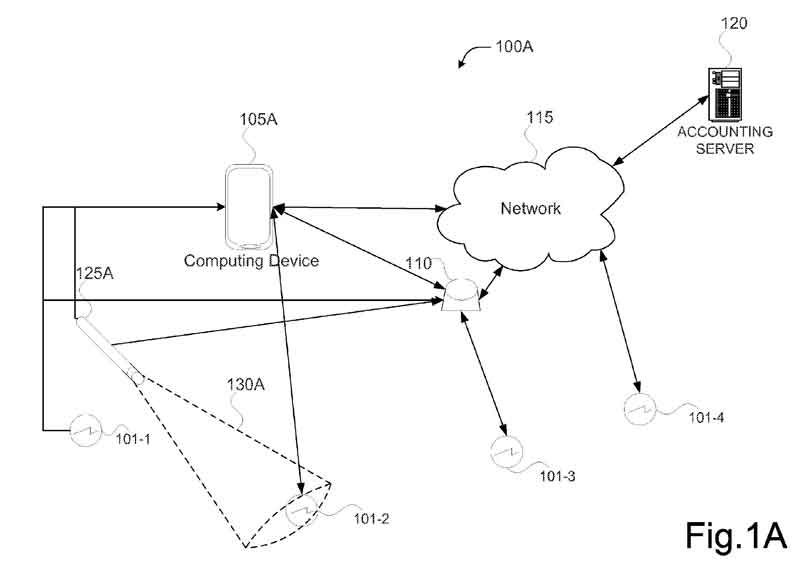
Intel Awarded Patent on Magic Wand
Intel Corporation was awarded a patent for “Magic Wand Methods, Apparatuses and Systems” by the U.S. Patent and Trademark Office. U.S. Patent No. 9,888,090 for this magic wand issued on February 6, 2018. The abstract of the patent states “creating, discovering, and/or resolving spells using a wand are provided.” (Just a minute while I find a change of underwear.)
Of course the wand is used to cast spells, which could be “triggers to one or more sequences, operations, and/or actions.” One example of a spell is an “unlock” spell. This unlocking spell appears to work whether or not you utter the word “alohomora.” However, the wand can have a microphone in order to use voice commands with the spell. So if you really wanted to use “alohomora” with your wand to unlock something, it appears you can do that. For example, the patent says that a “Transparency” spell could make a window transparent when a user points her wand at a window and says “Transparify.”
The “wand” is not meant to be limited to a specific shape or form. The wand could be in the form of “a sword … a screwdriver … or a baseball bat.” A sword? Awesome. A screwdriver? I don’t want to play anymore. A baseball bat? Ok, clearly someone is trying to compensate for something.
Are you wondering if anyone else could use your wand? Maybe not. The wand can also have biometric sensors to determine who is trying to use the wand. I’m assuming this means you can configure your wand not to respond to anyone else but it’s owner, but don’t tell anyone. It’s much easier to shatter someone’s confidence if they think, despite trying for hours, they just can’t perform the spell correctly.
The wand can also let you know whether you performed a spell correctly by making certain sounds, flashing lights or vibrating. And if you need the wand to spell it out for you, it can also play messages like “Your spell has completed properly” or “Your spell has not completed properly”.
The Intel patent never mentions Harry Potter. The closest it gets is when it says that the wand “could be a hand-held device that is depicted in various movies, television series, books, etc.”
The magic wand can be used for interactive video games. Two wand owners could have “wand duels.” On the more mundane side, the wand could also be used in home automation, such as controlling smart objects or “Internet of Things” devices through spells cast with the wand.
I don’t want to ruin the magic of the wand, but thought I should mention at least a few technical details. So stop reading if this might take the fun out of it. The wand communicates with other devices using radio-frequency (RF) communications methods “such as Bluetooth low energy (BLE) signaling, RF identification (RFID) signaling, infrared signaling, WiFi signaling, and the like.” It can also be paired with a computing device, like a smartphone or a desktop computer, to help determine what spell was just cast. One figure from the patent is reproduced below. Element 125A is the magic wand communicating with computers, networks, etc.
For Patent Attorneys Only
For the patent nerds who want to know what the patent’s first independent claim looks like, here is claim 1:
1. A wand comprising:
at least one processor;
one or more sensors, communicatively coupled with the at least one processor, to detect one or more gestures wherein the one or more gestures are movements performed using the wand by a user of the wand, and generate sensor data representative of the one or more gestures;
a device interface module to operate on the at least one processor to obtain, from the one or more sensors, the sensor data representative of the one or more gestures;
a spell module to operate on the at least one processor to receive, from the device interface module, the sensor data representative of the one or more gestures, and convert the sensor data representative of the one or more gestures into a spell sequence;
communication circuitry, communicatively coupled with the at least one processor, to communicatively attach to a computer device, transmit the spell sequence to the computer device, and receive, from the computer device, a spell output based on the spell sequence, a first wand position relative to an external output device, and a second wand position relative to an auxiliary device, wherein the external output device and the auxiliary device are disposed outside of a housing of the wand, the external output device is detached from the wand, and the auxiliary device is attached or unattached to the housing of the wand; and
one or more internal output devices, communicatively coupled with the at least one processor, to obtain a first instruction from the device interface module for activation of the one or more internal output devices to provide the spell output to the user, wherein the internal output devices are disposed within the housing of the wand.

